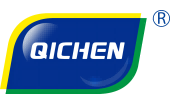Nail-free glue, also referred to as liquid nail or nail-free adhesive, is a versatile construction adhesive known for its exceptional bonding strength. This adhesive substance finds its nomenclature as "nail-free glue" in China and "liquid nail" internationally. This article provides an insightful guide on employing distinct construction approaches when using nail-free glue on various materials, specifically focusing on apple tree surfaces.
Construction Method for Light Objects:
For lightweight objects, a meticulous process is advised to ensure a reliable bond. Begin by preparing the surface through cleaning and smoothing. Subsequently, apply the adhesive in alternating layers of thickness, allowing intervals for optimal adhesion. Upon proper application, carefully press the surfaces together, firmly securing the object.
Dry Glue Technique for Heavy Objects:
When dealing with heavier items, a dry glue method is recommended. After surface preparation, apply the adhesive intermittently on the surfaces. Bring the surfaces together and gently separate them, allowing the adhesive to evaporate partially for approximately 30 to 60 seconds. This step quickens solvent evaporation, enhancing initial adhesion. Finally, press the surfaces together for 10 to 30 seconds and firmly attach the object.
Wet Glue Approach for Heavy Objects:
For heavy materials, a wet glue method is suggested. Clear the surfaces of any contaminants and then apply a layer of adhesive at intervals, with a thickness of 3 to 5mm. Allow the adhesive to rest for 2 to 3 minutes until a surface crust forms. Press the surfaces together and perform gentle horizontal and vertical movements. This technique promotes even adhesive distribution and object fixation.
Application for Fragile and Overweight Items:
Delicate or heavy items require specialized handling. Clean the surfaces meticulously, then shape the adhesive into "well," "zhi," and "ten" patterns. This configuration amplifies stress distribution. After waiting 1 to 2 minutes, press and hold the surfaces together. Release when confident that the bond is secure. This technique minimizes the risk of the object slipping.
Helpful Tips:
Prior to adhesive application, it is prudent to perform a visual compatibility and adhesion test. This step ensures compatibility and minimizes any concerns related to adhesion and corrosion.
Ensure the surfaces of the raw materials are thoroughly cleaned, free from contaminants like oil, paint, protective film, wax, or release agents. Such substances can hinder adhesive efficacy.
In conclusion, mastering the art of nail-free glue application for varying materials is crucial for achieving secure and enduring bonds. By understanding these distinct methods, users can make informed decisions regarding adhesive techniques based on the specific properties of the materials they are working with.
Post time: Jul-04-2023

